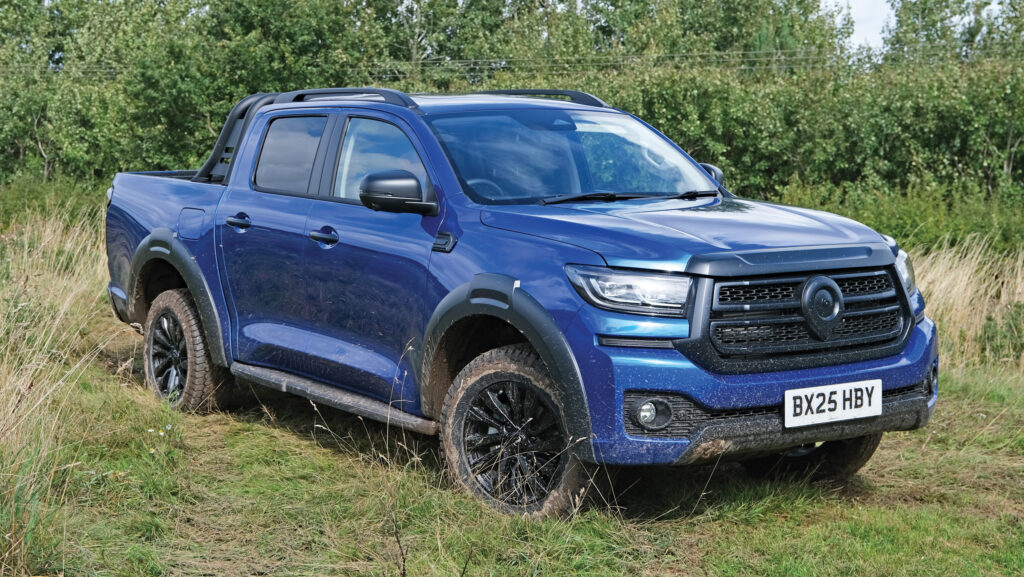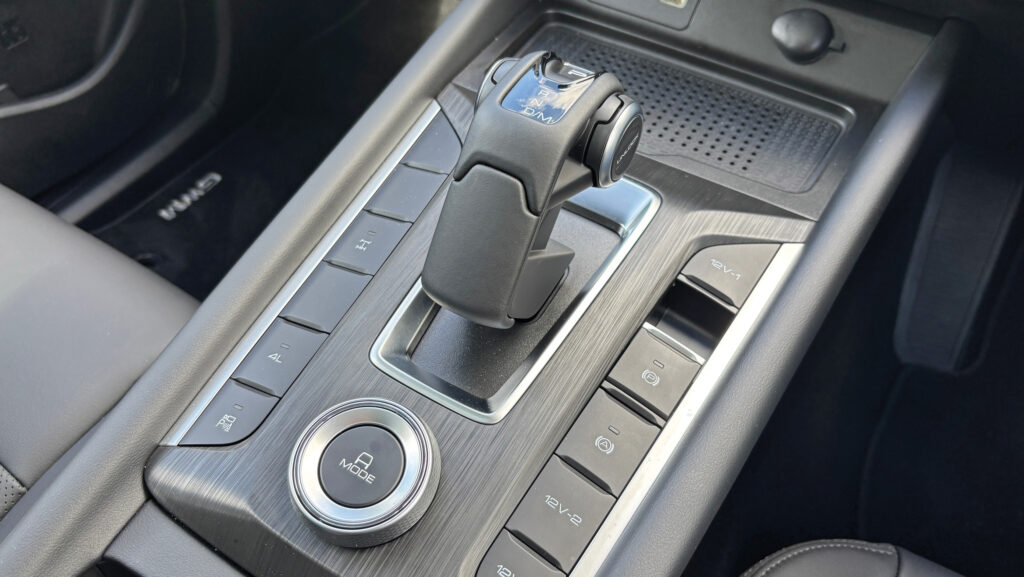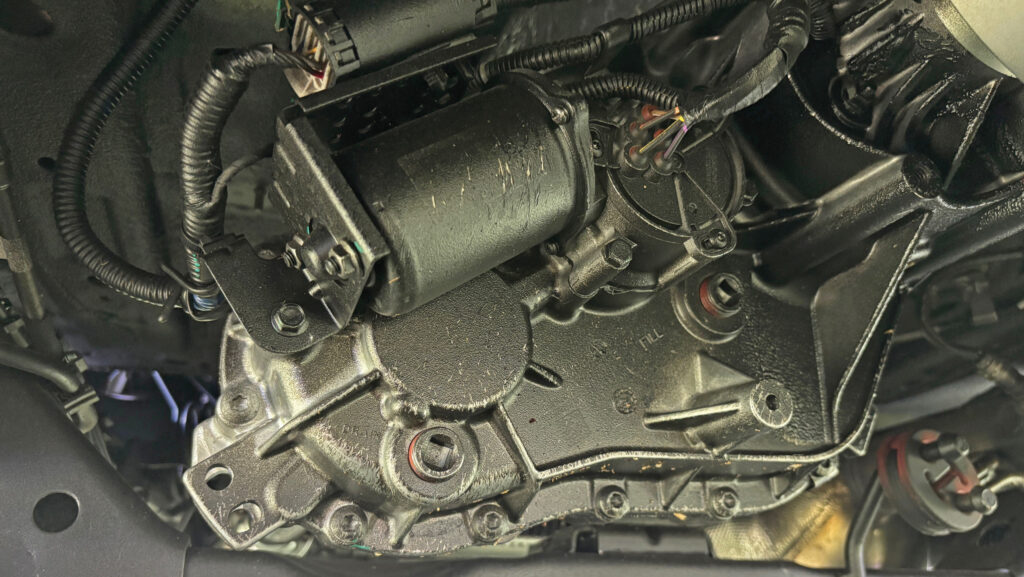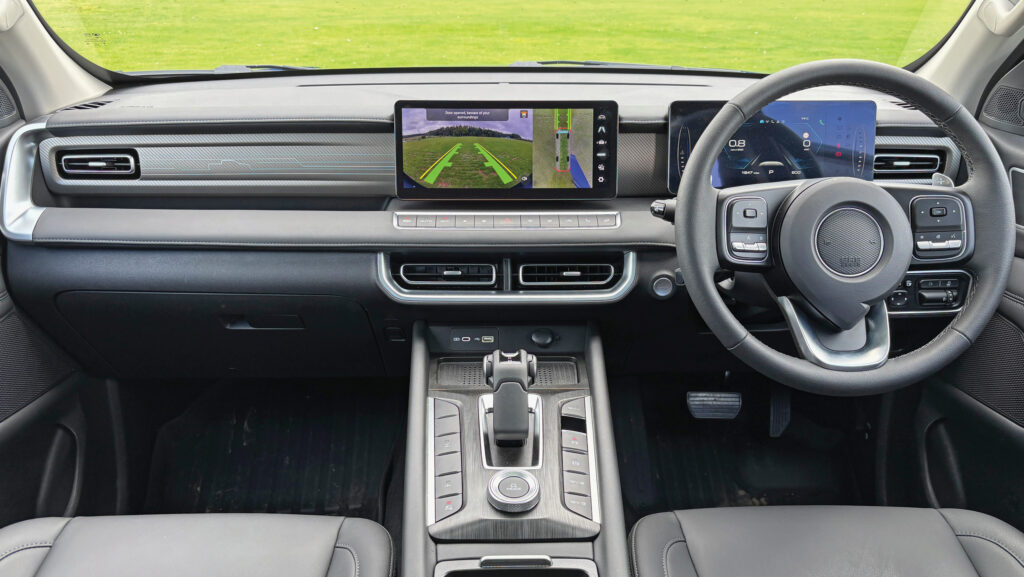On test: GWM Poer pickup offers value for money
 © James Andrews
© James Andrews As GWM rolls out its latest Poer300 pickup in the UK, it will be hoping buyers have a short memory.
For this is the Chinese brand’s second attempt at proffering such a vehicle on these shores after the cheap, and not so cheerful, Great Wall Steed (2012-2016) failed to make its mark.
See also: On test: Electric assistance for Toyota Hilux Hybrid 48V
The story should be different this time around.
Not only does the Poer (pronounced Power) seem far better bolted together, but the austerity years have been left well behind.
Tough, “trapezoidal” steel framework replaces the tinny construction of old, while tablet-like touchscreens usher the interior firmly into the modern age.
There’s some decent engineering too, with a nine-speed automatic transmission, wind-up release mechanism and an on-demand four-wheel drive system.
The upshot is that it’s no longer a budget workhorse for the undiscerning.
Senior bods at importer International Motors – also responsible for bringing Isuzu and Subaru to the UK – are pitching it at or above the level of the KGM (formerly Ssangyong) Musso.
And they have lofty ambitions to reel in a few Hilux and D-Max owners; maybe even the odd high-spec Ranger or Amarok punter.

© James Andrews
What about power?
There’s little to grab the attention here, with GWM’s in-house 2.4-litre, four-cylinder diesel delivering a modest 181hp.
Yes, it’s gutsier than an Isuzu D-Max, but most rivals have a few extra horses in the stable.
More impressive is the 480Nm of torque, which is available from 1,500rpm.
This delivers a hearty shove at low speeds, getting it moving quickly and removing any dramas when setting off with a heavy trailer in tow.
On the road, it’s a steady cruiser: powerful enough to prevent exasperated sighs on uphill drags, but certainly no pulse raiser.

© James Andrews
As for transmissions, the only option is a nine-speed torque converter auto.
The odd manual diehard will be disappointed, but it’s a fitting partner for the 2.4 diesel and has enough ratios to makes the changes virtually imperceptible during steady driving.
Another boon for on-road performance, particularly on loose or slippery surfaces, is the torque-on-demand transfer case.
This allows drivers to select an automatic four-wheel drive mode for road use that engages whenever slip is detected.
In normal conditions, all power is sent to the rear wheels to save fuel and prevent excess wear on the front tyres. But, as soon as those wheels start to lose grip, drive is instantaneously shared with the front.
It’s effective, too. Bury the throttle pulling out of a stone driveway and it’ll make a clean getaway rather than rooster tailing pebbles across the parish.
Is it good off road?
For general sorties around fields and farm tracks, the torque-on-demand system provides plenty of grip.
But when the hills get steeper and the ruts deeper, it’s time to bring low range into play. This divvies up power evenly between the front and rear axles, and allows the rear diff-lock to be engaged if needed.
Normally, systems like this with no centre differential have to rely on wheel slip to prevent wind-up in the transmission.
However, GWM has pre-empted any problems by fitting a wind-up release mechanism on the prop shaft.
If the truck is driven in four-wheel drive on a surface that has too much grip for the wheels to slip, it’ll release the tension (letting out an audible clunk in the process) thus preventing any damage to the running gear.
In typical pickup fashion, the Poer’s weighty chin and large rear overhang puts the most aggressive ascents and descents out of the picture.
Approach and departure angles of 27deg and 25deg are respectable enough, as is the 232mm of ground clearance. Less so the 500mm wading depth, which is a good 200-300mm shallower than some rivals.
Lugging and hauling
Towing capacity is the all-important 3.5t for a braked trailer and just over a tonne can be carried in the rear load bed.
That said, a gross train weight of 6,200kg means it can’t legally tow and carry these at the same time.
The load area is on the short side, but it’s as wide as it is long and deeper than a Ford Ranger’s, so volume works out about average. It also comes with a spray-in liner as standard.
Another perk is a neat folding step incorporated into the tailgate. Once pulled out, this provides a handy non-slip surface for loading or climbing into the load bed.
The tailgate has central locking too, plus dampers to prevent it crashing down when opening in a hurry.
Decent interior?
A raised transmission tunnel, twin dash/infotainment screens and some decent quality leather (leatherette on the base model) puts the Poer’s interior at the smarter end of pickupdom.
The main 12.2in display supports wireless Android Auto and Apple CarPlay and, though not as user friendly as some, is positioned nice and high on the dash.

© James Andrews
Other thoughtful additions include a wireless phone charger – ventilated to prevent batteries going into meltdown – and a generous cubbyhole under the central armrest.
There are a few proper buttons on the dash that avoid having to delve into the screen for every function, and enough on the steering wheel to prevent hands having to wander too far during driving.
Of more debatable merit is the “aviation style” gear selector. Some might like the Top Gun vibe, but it’s not the most comfortable or logical to use.
More welcome are the three pre-wired auxiliary switches that make it easy to add extra lights and powered accessories.
Which model?
The range kicks off with the £31,495 Lux, which comes with most of the important gear included as standard.
However, buyers have to make do with leatherette-clad manual adjusting seats, fewer interior goodies and no tailgate step.
Heated, ventilated and electrically adjustable leather seats are added on the £34,830 Ultra, as well as front parking sensors, a 360deg camera system, the step, sunroof and extra ambient lighting.
That just leaves the Vanta, for which buyers shell out a further £2,000 to have the wheels and trim finished in black, rather than the regular silver and chrome.
Verdict
GWM has made good use of the decade separating the Great Wall Steed and Poer300.
The newcomer is in a different league to its forebear, offering decent power, plenty of creature comforts and, seemingly, good build quality.
Buyers will of course be taking a leap into the unknown, though they can take solace from the fact that it’s backed by an importer that knows its way around a pickup.
It’s no longer cheap – the Steed was £14,000 back in 2012 – but buyers would have to spend at least £5,000 more to get an equivalent spec from Isuzu or Toyota.
And even then, they’d be forgoing the sophisticated four-wheel drive system.
Likes and gripes
Likes
- Decent power
- Smooth transmission
- Sophisticated off-road system
- Good value
Gripes
- No manual option
- Ride could be smoother
- Screen not that easy to navigate
- Silly gear selector
GWM Poer300 specs
- Engine 2.4-litre, four-cylinder diesel
- Power 181hp@3,600rpm
- Torque 480Nm (1,500-2,500rpm)
- Transmission Nine-speed automatic
- Four-wheel drive Switchable with torque-on-demand system
- Fuel economy 32.7mpg (combined cycle)
- Towing capacity 3.5t
- Payload 1.05t
- Kerb weight 2.2t
- Starting price £31,495 (Poer300 Lux)

